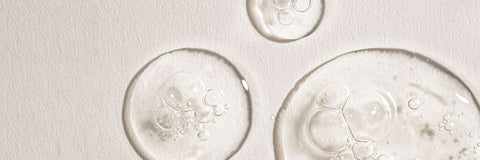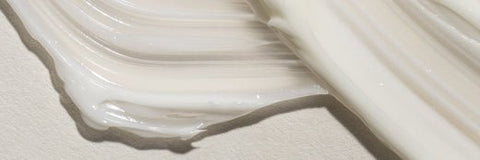It’s been said that what can’t be done alone, can be done together. The same can be said for peptides for the skin. Like a lot of skin care ingredients, peptides, such Palmitoyl Tetrapeptide-7, Palmitoyl Tripeptide-1, and Dipeptide Diaminobutyroyl Benzylamide Diacetate, get a lot of buzz, and yet even skin care mavens rarely understand what they are—or how to pronounce them.
Luckily, you don’t have to be able to pronounce them to benefit from peptides, which is why in this article we’ll discuss what peptides are, 10 benefits of peptides, different types of peptides, and how to use peptides in your skin care routine.
IN A NUTSHELL
Ingredient Category: Skin Plumper
Main Benefit: Peptides help to plump the skin, minimizing the look of fine lines, wrinkles, and pores.
Find It In: Eyes Eyes Baby Anti-Aging Eye Cream, ‘A’ Game Retinol Serum, Youth Fairy Retinol Moisturizer, Crème de la Cream Brightening Moisturizer, and One Lip Wonder Lip Treatment.
What are Peptides?
In a nutshell, peptides are little pieces of protein composed of amino acids. Those amino acids are capable of performing different tasks; thus, when certain amino acids are grouped together, they form peptides that perform different functions. Found naturally in the skin as well as in many foods, they are often referred to as “building blocks.” Certain peptides might help firm the skin, while others might help minimize the look of fine lines; it all depends on the kind of peptide you’re talking about.
As we said, peptides are found naturally in the skin; but as time goes on– usually around our 30s– they become less effective. That’s why it’s a good idea to incorporate peptides into your skincare routine.
10 Benefits of Peptides
Remember, peptides aren’t just one-trick ponies. They’ll perform a myriad of functions; it just depends on how they’re configured and what you’re trying to get them to do.
Here are just a few of the functions peptides perform:
- Peptides help hydrate the skin.
- They firm and tighten the skin.
- They help alleviate temporary discomfort.
- They leave skin feeling smoother and calmer.
- They help beautify the skin.
- They’re anti-aging.
- They minimize the appearance of large pores.
- They lessen the appearance of occasional redness.
- They give skin back its natural glow.
- They protect the skin.
Different Types of Peptides for Skin
As we mentioned above, different kinds of peptides perform different task, which is why it’s important to have some grasp of which peptides do what.
Here are just a few different kinds of peptides you’ll find in skin care:
Matrixyl 3000 – The peptide matrixyl 3000 is like the salt and pepper of peptides. A little bit of both will spice up your dish. Composed of two different peptides (palmitoyl oligopeptide and palmitoyl-tetrapeptide-7), it works to help repair and restructure your skin.
Signaling peptides – Signaling peptides work by sending little messages to proteins and acids in your skin to tell them they should start working. Without them, those natural ingredients in your skin might get a little lazy!
Carrier peptides – Carrier peptides help bring necessary ingredients to skin to help beautify it, almost like little freight elevators for the skin.
Copper peptides – Copper peptides are thought to act as antioxidants that protect the skin against environmental stressors.

How To Use Peptides In Your Skin Care
Peptides known as topical peptides (as opposed to peptides you might ingest either via food or vitamins) are often found in skin care products due to their ability to help the skin essentially take care of itself.
Incorporating peptides into your routine is just a matter of choosing the right products. Here’s a simple way to use peptides in your skincare:
1. Cleanse the skin.
Always begin your skincare routine with a gentle cleanser to remove dirt and oil without drying out your skin.
2. Apply toner.
A few spritzes of a hydrating toner made for all skin types helps keep oils balanced and skin hydrated after cleansing.
3. Apply serum.
Here’s your first chance to introduce peptides into your routine. Serums are concentrated products formulated to penetrate the deeper layers of your skin, for maximum results. Our ‘A’ Game retinol serum includes peptides to work alongside other anti-aging ingredients for more youthful-looking skin.
4. Use eye cream.
Unfortunately, the skin around the eye area produces very, very little oil, making it prone to fine lines and wrinkles, dark circles, and general puffiness. That’s why we use Matrixyl 3000 which contains the peptide, Palmitoyl Tripeptide-1, in our Eyes Eyes Baby eye cream. It brings a fresh and revitalized appearance to the delicate skin in that area.
5. Moisturize the skin.
Your face cream nourishes, protects, and seals in moisture and any other products you have applied on your skin so far. Peptides can also be found in moisturizers, amplifying the effects of the rest of the ingredients. We’ve included Palmitoyl Tetrapeptide-7 (found in Matrixyl 3000) in both Crème de la Cream and Youth Fairy.
Don’t forget to moisturize your lips! You will find peptides in our lip treatment, One Lip Wonder, to help plump and smooth your lips. Botanical ingredients such as plant stem cells and castor seed oil work to protect your lips from being dry and chapped, and the peptides also work to seal in hydration.
Bonus: Detox with a mask.
In addition to your daily routine, a detox mask does wonders for your skin by removing impurities and smoothing the skin. We’ve included peptides like Acetyl Hexapeptide-1 in our Prince Charcoal detox mask to help calm your skin, as well as Diaminobutyroyl Benzylamide Diacetate, to help fight the signs of aging.
Other Sources of Peptides for Skin
Eating foods rich in peptides can greatly benefit your skin. Natural peptides can be found in your skin, but they can also be found in plant or animal sources that are high in protein like fish, milk, eggs, soy, and beans.
Frequently Asked Questions About Peptides
Are peptides safe?
Generally speaking, peptides are completely safe; but that said, everyone’s skin is different when it comes to sensitivity. If you’re concerned about peptides for skin, check with your dermatologist before starting a skin care regimen with peptides.
Which peptides should I look for in my skin care routine?
Since peptides can perform different tasks, it depends on what you’re trying to accomplish. For example, Matrixyl 3000 will help restore and revitalize your skin, while copper peptides act as protectors.
Which is better: natural peptides or synthetic peptides?
While the jury is still out definitively on whether or not synthetic peptides are better than natural peptides, some evidence suggests that synthetic peptides are thought to hold up better in water and are more efficient at penetrating the skin. They’re also thought to be more economical than natural peptides. Some studies also suggest they perform just as well on skin as natural peptides.
What do peptides do?
Peptides are essentially small pieces of protein composed of amino acids that perform different functions, depending on what you want them to do. As such, they can do everything from help hydrate the skin to protect it from environmental stressors.
Peptide vs Protein
Think of peptides as the “mini-me” version of proteins. Both are made up of amino acids, usually referred to as “building blocks,” but peptides are smaller chains. Proper proteins are usually 50 or more amino acids, while peptides are anywhere from two to 50 amino acids.
Peptides vs Retinol
Although both peptides and retinol can renew the look of beautiful skin, protect the skin from environmental stressors, and have anti-aging benefits, peptides are thought to be more gentle on the skin, especially for those people with sensitive skin. That being said, peptides and retinol work wonders together, which is why we’ve included peptides in both our retinol products.
Peptides Side Effects
If you have very sensitive skin, it’s possible you might experience irritation from topical peptides. As peptides are relatively new to the skin care scene, there’s also not a ton of research out there just yet. If you’re concerned about side effects, it’s not a bad idea to see your dermatologist before you start using peptides.
Matrixyl 3000 Side Effects
There isn’t much in the way of evidence that Matrixyl 3000 has any side effects, other than possible irritation to sensitive skin (most skin care ingredients carry some degree of risk for very sensitive skin.) If you’re concerned, it’s always best to check with a dermatologist first.
The next time you’re perusing the skin care aisle, make sure you look for peptides in the ingredients list. Chances are, no matter what function you’re looking for your skin care to perform, there’s a peptide out there that can do it.












